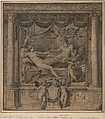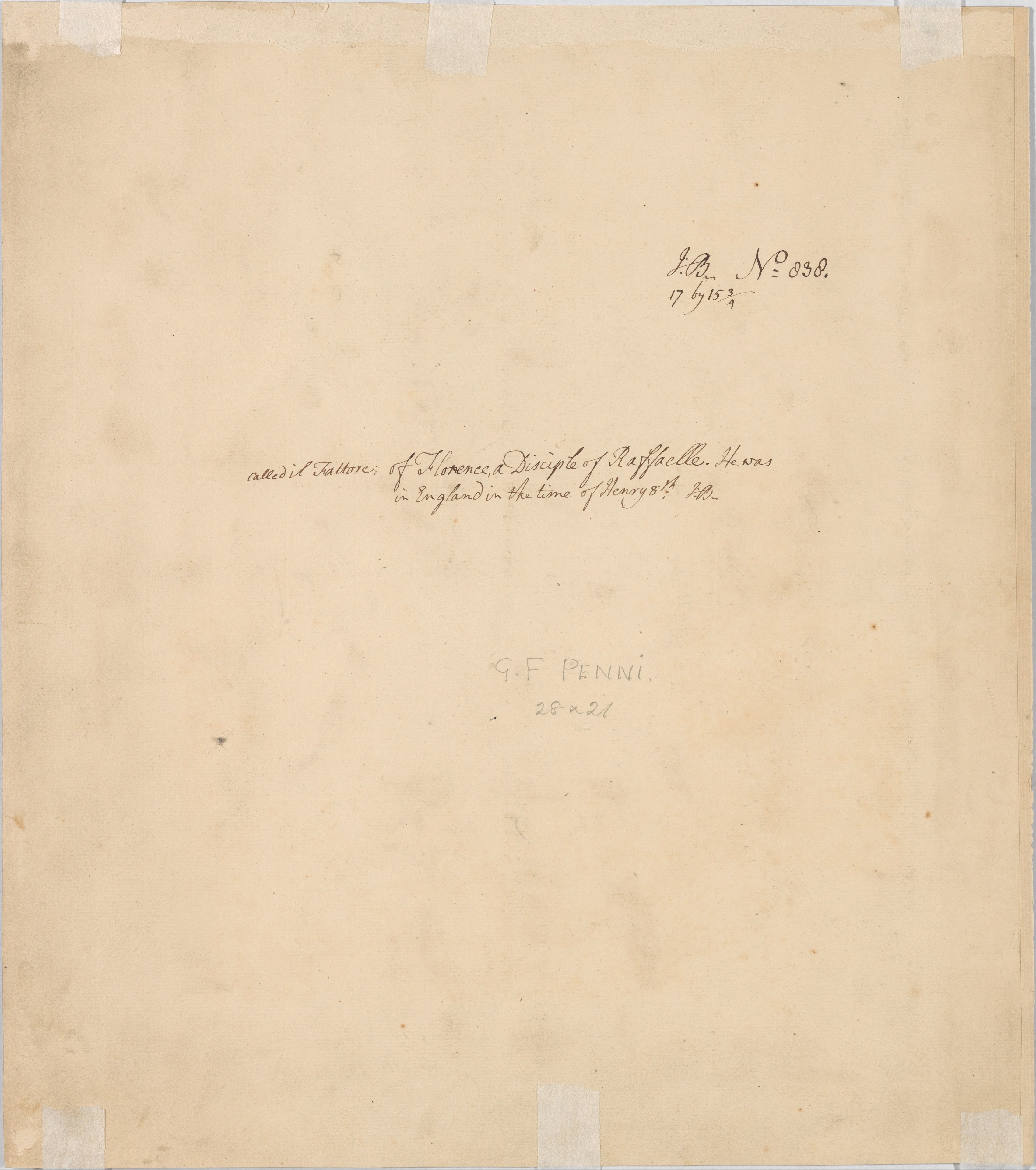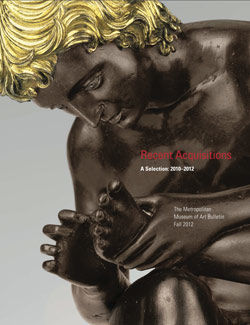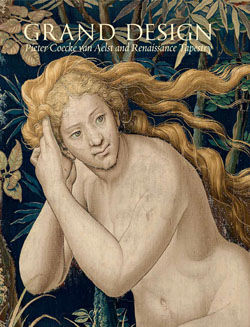Jupiter and Juno: Study for the "Furti di Giove" Tapestries
Perino del Vaga (Pietro Buonaccorsi) Italian
Not on view
One of Perino’s most beautiful and important drawings, this monumental depiction of the Roman gods holding hands as they recline on their marriage bed is a highly finished study for one of the woven panels in a lavish and costly set of tapestries, now lost, depicting the clandestine erotic adventures of Jupiter (the "Furti di Giove"). The tapestry series was commissioned by Admiral-Prince Andrea Doria, ruler of Genoa and one of Perino’s major patrons, to hang in his newly erected palace on the outskirts of the city as a dazzling display of princely magnificence and cultivated taste. The artist envisioned the amorous composition as if seen through a window complete with illusionistic framing elements lavishly decorated with classical detailing. The high degree of finish, lack of changes or revisions, and rich combination of media, as well as the large size and the inclusion of the surrounding borders and heraldic shield, suggest that this drawing was made as a presentation piece to show the patron. Trained in Raphael’s studio in Rome, Perino absorbed the lessons of his master’s vocabulary (steeped in classical antiquity) into his own uniquely personal, elegant Mannerist style. This mature drawing of Jupiter and Juno, with its emphasis on extreme artifice, decorative grace, and effortless refinement, represents something of a culmination in Perino’s artistic career. It also more than proves his sheer technical virtuosity and capacity for extravagant invention.
(Carmen C. Bambach)
Due to rights restrictions, this image cannot be enlarged, viewed at full screen, or downloaded.
This artwork is meant to be viewed from right to left. Scroll left to view more.





















